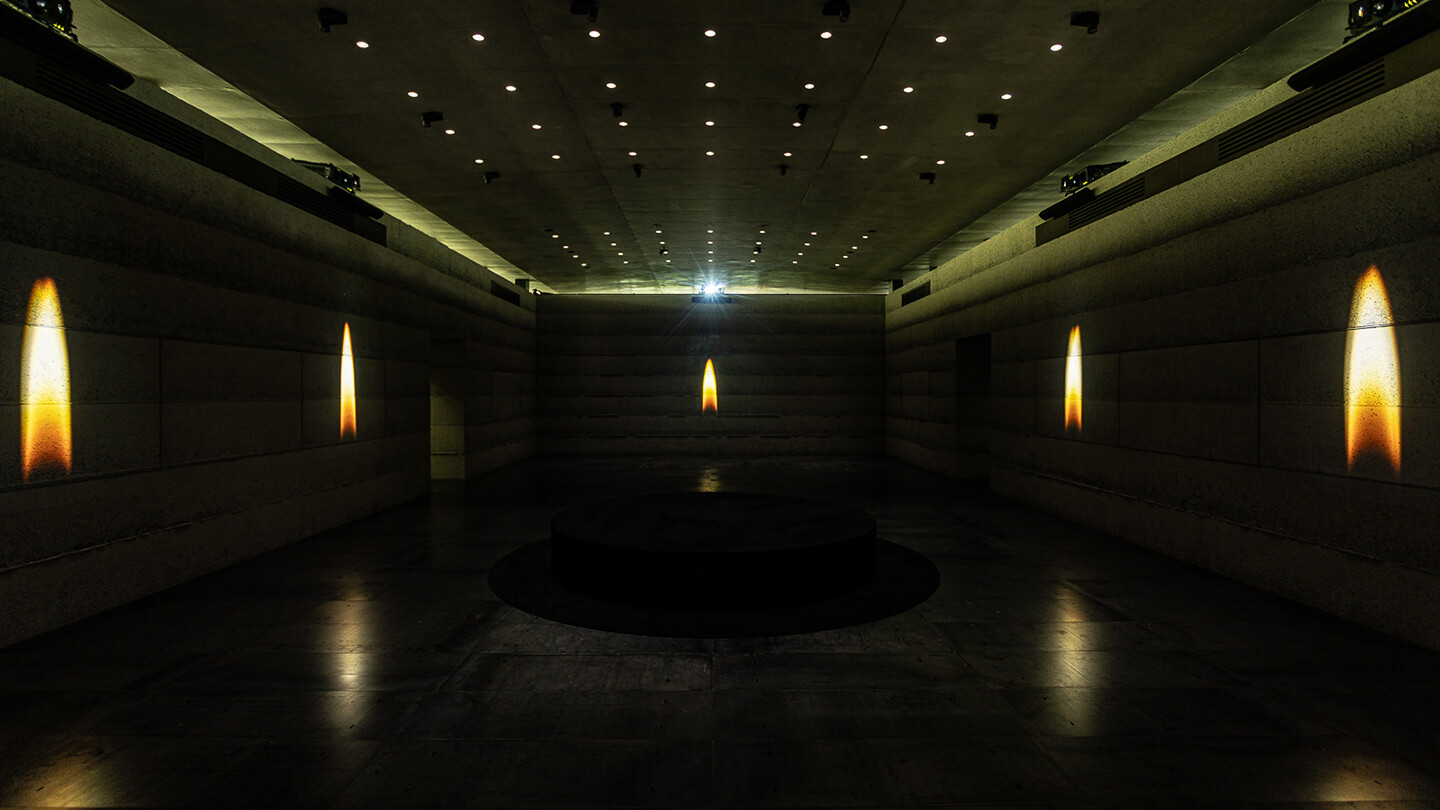Voices of Memory
Museum of Warsaw
168 Wolska Street
01-258 Warsaw
Poland
On 2 October, Voices of Memory — a new permanent exhibition by Krzysztof Wodiczko was opened to public at the Hall of Remembrance at the Warsaw Insurgents Cemetery. Audio-visual installation aims to express opposition to all armed conflicts. It has been inspired by and based on the accounts of wartime experiences related to the Warsaw Uprising. Reminiscences of over a dozen people—civilians as well as insurgents and members of their families of younger generations—reveal a complex, multidimensional tale of the year 1944. In conversation with Wodiczko, they talk about finding themselves in boundary situations and about the impact it exerted on their life. The witness testimonies are accompanied by the images of flames, propelled by the sound of human voice.
Voices of Memory is a work which keeps the memory of the Warsaw Uprising alive. And yet, the accounts of witnesses to the year 1944 don’t fit the narrative of a heroic rising for freedom that dominates the collective thinking about the Uprising. In their accounts, it is a time of ubiquitous death and great fear. The entire population of the city was stricken by suffering and terror.
The work points to the futility of fleeing one’s own memory whose voice keeps recalling the images of traumatic experiences. People who survived the war cannot forget about it. The experiences of wartime accompany them for the rest of their lives.
Voices of Memory can also be interpreted as a warning—a tale passed on to the next generations by the witnesses to war informs the way young people think of armed combat. It builds a perception of warfare and broadens an understanding of what a war really means. Family history narratives inform the sons’ and daughters’ attitudes towards one-time enemies of their parents.
Wodiczko’s installation also raises a question of how to remember and how to employ this memory when faced with today’s and future threats.
The 1944 uprising
On August 1, 1944, less than 35,000 soldiers joined the Warsaw Uprising. The civilian population provided them with support and assistance. For sixty-three days, the Varsovians were struggling to survive, hiding in crowded underground shelters. They fell victim to machine guns and mortars. They died buried under the rubble of bombed tenement buildings. They were shot dead in mass executions. It is estimated that approximately 150,000 civilians and 18,000 insurgents perished in the Uprising.
Krzysztof Wodiczko was born in 1943 in Warsaw and lives in New York City and Warsaw. He is a Professor Emeritus of Massachusetts Institute of Technology and the Harvard Graduate School of Design in Boston, currently teaching at the Academy of Fine Arts in Warsaw and University of Pennsylvania in Philadelphia. He is one of the most acclaimed audio-visual artists today, author of monumental installations in urban spaces and a theoretician of art. In his works, Wodiczko raises political and social topics; he draws attention to the problems of exclusion, alienation, resentment and hostility towards the ’Other’. He tackles the issues of democracy and human rights. He worked with homeless and immigrants. For years now, he has been cooperating with war veterans, creating artworks which openly oppose armed conflicts and pose questions about the role of culture in celebrating the memory of wars. The exposition at the Hall of Remembrance is Wodiczko’s first spatial project installed as a permanent exhibition.
Hall of Remembrance at the Warsaw Insurgents Cemetery is a symbolic site dedicated to the victims of the 1944 Warsaw Uprising. It is a place where one can reflect upon the consequences of violence, radicalisms and armed conflicts.
The project has been realised in cooperation with the Profile Foundation. The exhibition is financed by the Capital City of Warsaw and the Ministry of Foreign Affairs of the Federal Republic of Germany.
Press contact: Julia Golachowska: Julia.golachowska [at] muzeumwarszawy.pl / T +48 22 277 43 94. Press material here. More information here.




